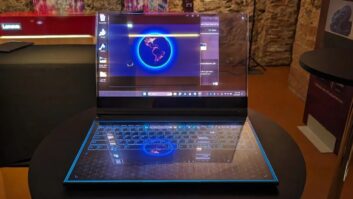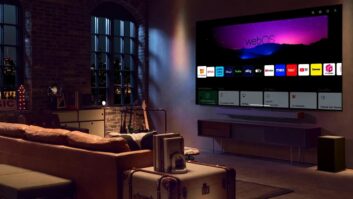An independent survey of mass merchant and high-end CE shoppers shows that plasma is the preferred format for large-screen TVs, but that pricing for the displays has only begun to touch levels that consumers would consider affordable.
That’s the word according to Quixel Research, a Katonah, N.Y.-based market research company that queried 500 shoppers at Best Buy, Harvey’s and Magnolia Hi-Fi stores this past May on their big-screen TV preferences.
Questions were put to 300 walk-in customers at Harvey stores in New York and Magnolia Hi-Fi locations in Seattle to explore the opinions of “prosumers,” or tech-savvy, custom-install oriented shoppers. In addition, 200 walk-in surveys were conducted at Best Buy stores in Paramus, N.J., Austin, Texas, and Seattle to gauge what mass merchant customers want in TV displays.
According to the results of Quixel’s Home Entertainment Survey 2002, 50 percent of prosumers said they would buy a plasma display if the price was $4,999 or lower. Consumers, on the other hand, said the price would have to drop to $2,999 for 50 percent of them to consider buying plasma.
Price thresholds were significantly lower for rear projection TV, with 78 percent of consumers and 64 percent of prosumers citing $1,000 or less as the sweet spot that would trigger a purchase.
The survey also found that size matters. Nearly 72 percent of surveyed consumers said they would like a screen size larger than 40 inches, even though only 19 percent currently have one over 42 inches. Twenty-nine percent of prosumers already have a TV larger than 42 inches, and 74 percent said they prefer screen sizes of 40 inches or more.
What’s more, 88 percent of prosumers and 83 percent of consumers said they prefer a 16:9 widescreen, and 75 percent of all respondents said that aspect ratio was an “extremely or very important” consideration in purchasing a TV.
The survey also confirmed that advertising has created a high consumer awareness of plasma, despite low distribution in the national electronic retail chains.
Among other findings:
- Plasma TV is the “cool incumbent,” and all other TVs and displays will have to measure up to its flatness — either by price or physical resemblance. While consumers are ready for a “flat world,” they definitely are not ready for the current plasma TV prices.
- Rear-projection TV was the most familiar format among those surveyed. Both consumers and prosumers are comfortable with it. End users are realistic about the tradeoffs with rear-projection TV, but their opinions are hampered by their impressions of older analog rear-projection TVs.
- Many end users have outdated notions of front-projection TVs, often equating them with the large ceiling-mounted projectors found in sports bars of yesteryear and don’t see the desirability for these in the home.
Underscoring consumer confusion over display technologies, a separate “Techs in the City” TV survey by Sears and Impulse Research recently revealed that only 46 percent of respondents understood the difference between plasma, liquid crystal display (LCD) and tube televisions. Sixty-two percent of the men surveyed believe they know TV technology, while only 31 percent of women do.
For more information on the Home Entertainment Survey 2002, contact Quixel Research at (914) 232-7775 or www.quixelresearch.com.













